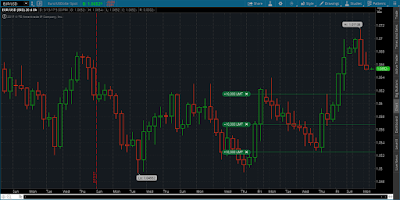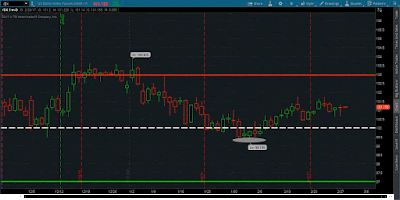As of December 28, 2017 the one-day, one-week, one-month, one-quarter, and one-year regression slopes of the Dollar Index are all negative. Looking further back, the five-year and ten-year regression slopes are positive, but this reflects the recovery from the Great Recession over the past decade. Because the one-year regression slope is the longest of the short-term measures that has turned negative, tells me that the almost decade long rally in the US dollar came to an end in 2017. The apparent reversal in the mid-term trend of the US dollar is a signal of a return to normalcy in global financial markets, and international capital flow.
When searching for context, I like to look at my longer-term
charts out to twenty-years. What stands out is the period from mid-2001 to
mid-2008, and the economic narrative of the day. From the early 1990s through to the early
2000s the US economy, and by extent the global economy was is a long-term expansionary
period. The growth that was experienced resulted from the US economy going
through the finally stages of transitioning from a manufacturing dominant
economy to a services dominant economy. A process which started in the late
1970s, and manifested as stagflation in the 1980s.
For the duration of the expansion during the 1990s, the US
dollar appreciated against wide baskets of it trading partners. This
appreciation reflected international investment capital flowing into the US to
participate in the tech bubble and the broader US equities market. By mid-2002
the Dollar Index was making lower lows in conjunction with lower highs, which
signaled the start of a downward trend. The trend in the dollar continued until
mid-2008, by which time global financial markets had become aware of an
underlying problem with the US financial system. During that same period, the
US consumer was left to do what they do best, which is borrow and spend, and
that they did. There was economic growth driven by appreciating housing prices
and deepening household debt, and even a recovery in the US equities markets
after the dot-com crash. The US dollar depreciated from 2002 through to 2008
for the same reason why it will depreciate from 2017 through to 2022 and maybe
into 2023.
There have been trillions of dollars in value created in US
equities since the lows of 2009. For the recovery part of the business cycle,
the US economy was the biggest and safest game in town, while the rest of the
world ‘sorted through their financial
affairs’. Now that we are in the expansion part of the business cycle, risk
appetite is returning to global financial markets. With (tepid) growth ensured
in the US, market participants can move their profits from the US equities
market into international markets to better leverage the synchronized expansion
we are currently experiencing around the world.
If global economies keep expanding in sync with each other,
monetary policy will remain on a path of tightening around the world. However,
consumer price inflation will not return in a synchronized manner, which means
US interest rates should rise relatively slower than world averages. This
should lead to further dollar depreciation in the face of further economic
expansion, which should continue to support the US equities market.






